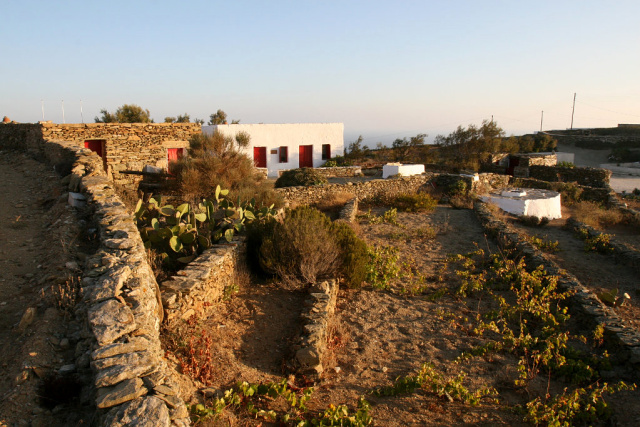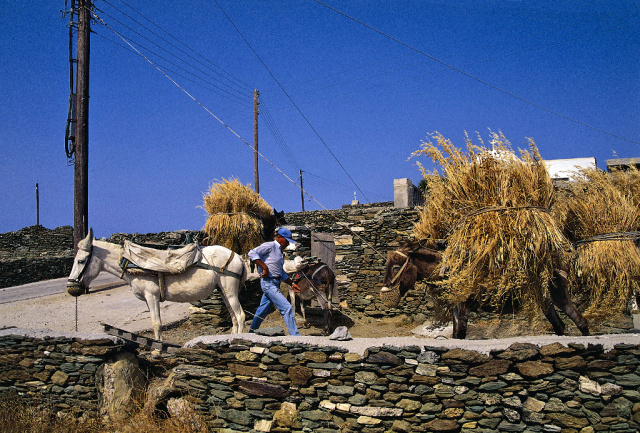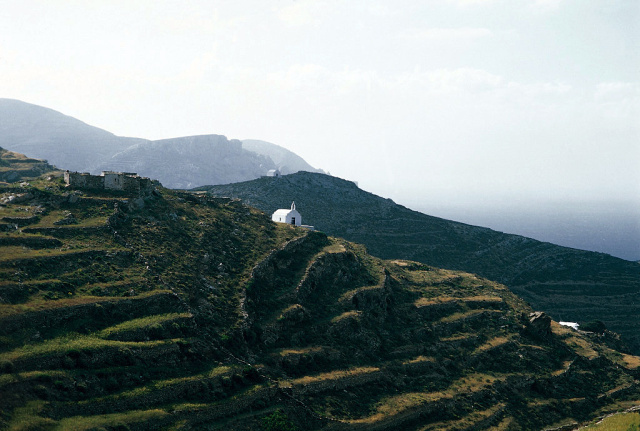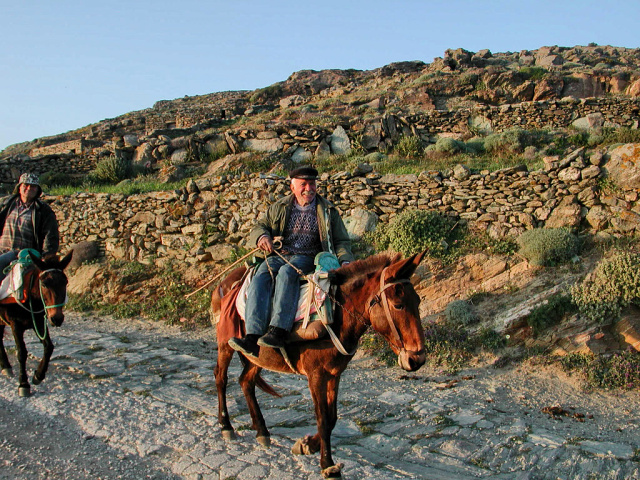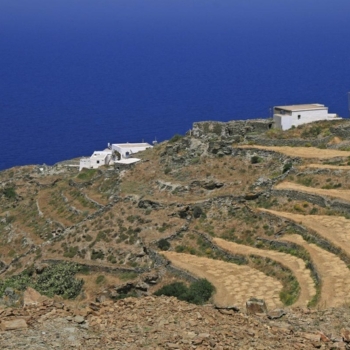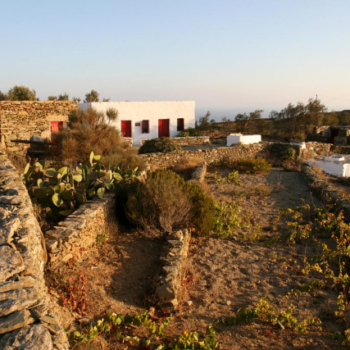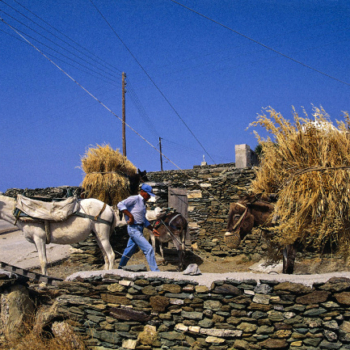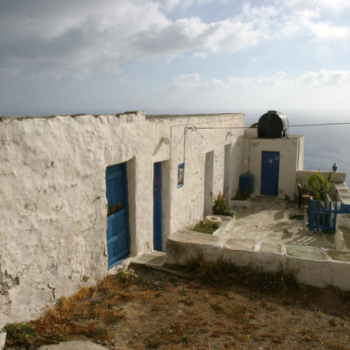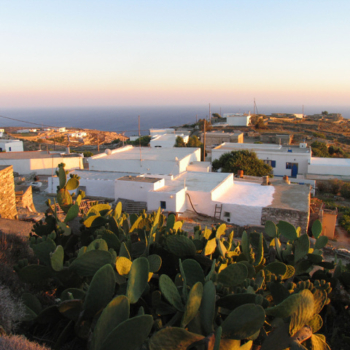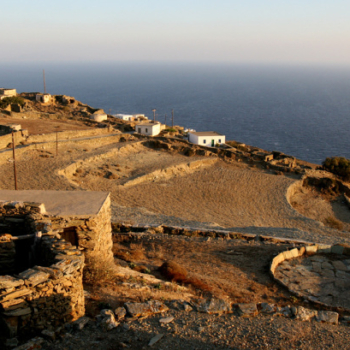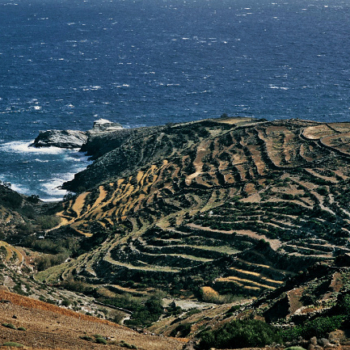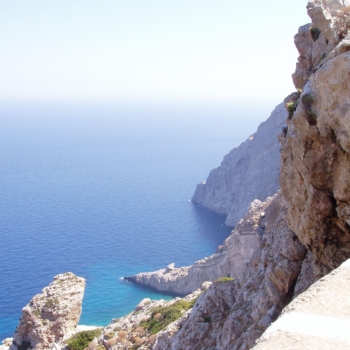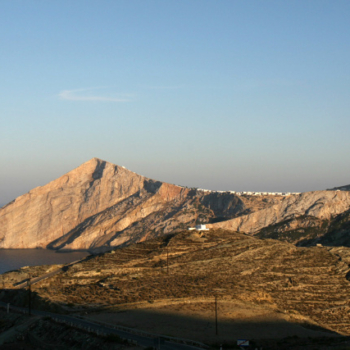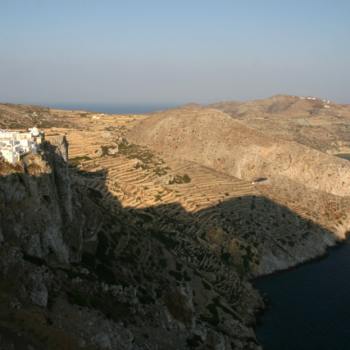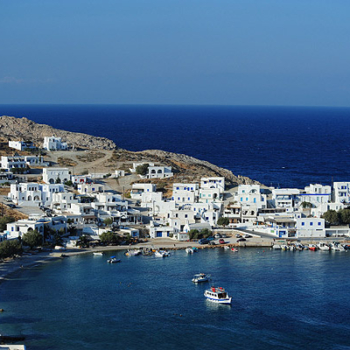This settlement stretching on the northwestern side of the island is probably the most representative example of exo-Chora architecture in Southern Aegean. “Exo-Chora” is traditionally called the countryside, the areas spreading around and beyond the fortified capital of the island.
Pano Meria is a lively folk art museum. It abounds in dry stones, independent small residences, gardens and hillside terraces cultivated with much effort, grocery stores and taverns that evoke childhood memories.
The geographical isolation and the barren lands were the main factors to define the living conditions of the area. The old estates became permanent residences only when the pirate raids subsided, i.e. in the second half of the 19th century and on. They are called “themonies” and are independent rural entities framed by stables, chicken coops, furnaces, oil presses and threshing floors. At the time of setting them up there was no surplus and the economy was necessarily closed. Exchanging products often replaced currency.
The inhabitants of Ano Meria were of the last ones in South Aegean that sheared their sheep to make shirts and blankets, made cheese and produced oil by relying only on their own forces. The island tradition, except for the looms that have been now set aside, continues up to our days.


